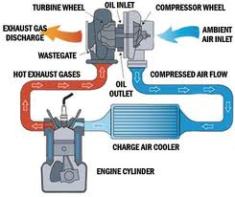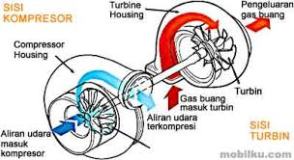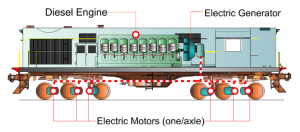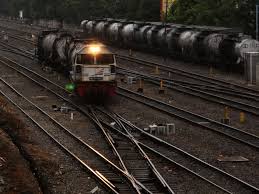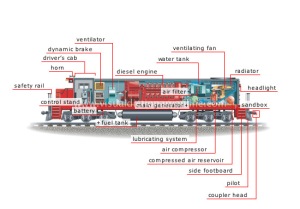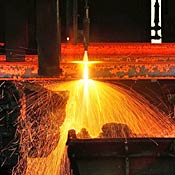
The combustion (gas) turbines being installed in many of today’s natural-gas-fueled power plants are complex machines, but they basically involve three main sections:
- The compressor, which draws air into the engine, pressurizes it, and feeds it to the combustion chamber at speeds of hundreds of miles per hour.
- The combustion system, typically made up of a ring of fuel injectors that inject a steady stream of fuel into combustion chambers where it mixes with the air. The mixture is burned at temperatures of more than 2000 degrees F. The combustion produces a high temperature, high pressure gas stream that enters and expands through the turbine section.
- The turbine is an intricate array of alternate stationary and rotating aerofoil-section blades. As hot combustion gas expands through the turbine, it spins the rotating blades. The rotating blades perform a dual function: they drive the compressor to draw more pressurized air into the combustion section, and they spin a generator to produce electricity.
Land based gas turbines are of two types: (1) heavy frame engines and (2) aeroderivative engines. Heavy frame engines are characterized by lower pressure ratios (typically below 20) and tend to be physically large. Pressure ratio is the ratio of the compressor discharge pressure and the inlet air pressure. Aeroderivative engines are derived from jet engines, as the name implies, and operate at very high compression ratios (typically in excess of 30). Aeroderivative engines tend to be very compact and are useful where smaller power outputs are needed. As large frame turbines have higher power outputs, they can produce larger amounts of emissions, and must be designed to achieve low emissions of pollutants, such as NOx.
One key to a turbine’s fuel-to-power efficiency is the temperature at which it operates. Higher temperatures generally mean higher efficiencies, which in turn, can lead to more economical operation. Gas flowing through a typical power plant turbine can be as hot as 2300 degrees F, but some of the critical metals in the turbine can withstand temperatures only as hot as 1500 to 1700 degrees F. Therefore, air from the compressor might be used for cooling key turbine components, reducing ultimate thermal efficiency.
One of the major achievements of the Department of Energy’s advanced turbine program was to break through previous limitations on turbine temperatures, using a combination of innovative cooling technologies and advanced materials. The advanced turbines that emerged from the Department’s research program were able to boost turbine inlet temperatures to as high as 2600 degrees F – nearly 300 degrees hotter than in previous turbines, and achieve efficiencies as high as 60 percent.
Another way to boost efficiency is to install a recuperator or heat recovery steam generator (HRSG) to recover energy from the turbine’s exhaust. A recuperator captures waste heat in the turbine exhaust system to preheat the compressor discharge air before it enters the combustion chamber. A HRSG generates steam by capturing heat from the turbine exhaust. These boilers are also known as heat recovery steam generators. High-pressure steam from these boilers can be used to generate additional electric power with steam turbines, a configuration called a combined cycle.
A simple cycle gas turbine can achieve energy conversion efficiencies ranging between 20 and 35 percent. With the higher temperatures achieved in the Department of Energy’s turbine program, future hydrogen and syngas fired gas turbine combined cycle plants are likely to achieve efficiencies of 60 percent or more. When waste heat is captured from these systems for heating or industrial purposes, the overall energy cycle efficiency could approach 80 percent.






